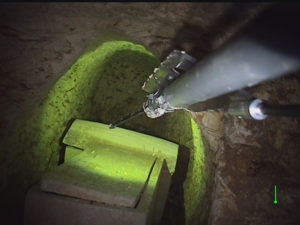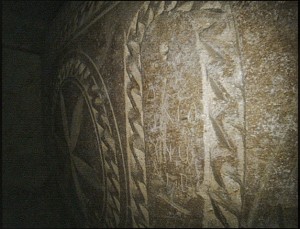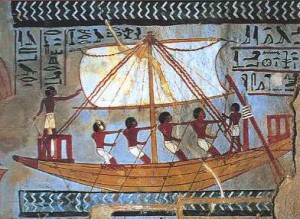Robot Archaeology
 Two years ago, my colleagues and I pushed the envelope of Jerusalem based archaeology by developing a robotic arm that carried a Hi-Def GE camera into a sealed 1st century burial tomb. In Israel, tomb archaeology is hampered by religious sensibilities. Religious activists don’t want the dead disturbed. For our part, we managed to get the activists on board by agreeing that we would not physically enter the tomb, and that we would not move ossuaries (bone boxes) around. In other words, the robotics solved two problems – a religious problem and an archaeological problem.
Two years ago, my colleagues and I pushed the envelope of Jerusalem based archaeology by developing a robotic arm that carried a Hi-Def GE camera into a sealed 1st century burial tomb. In Israel, tomb archaeology is hampered by religious sensibilities. Religious activists don’t want the dead disturbed. For our part, we managed to get the activists on board by agreeing that we would not physically enter the tomb, and that we would not move ossuaries (bone boxes) around. In other words, the robotics solved two problems – a religious problem and an archaeological problem.
As it turned out, the images that we captured were unique. We brought back the first ever statement of faith etched on the side of an ossuary. The majority of experts have read the Greek inscription as a statement referring to the resurrection of the dead. Also, our cameras captured the first symbols of Jesus’ original followers – a 1st century cross that totally debunks the idea that the cross became a Christian symbol only in the 4th century, and a one-of-a-kind image of a “great fish” spitting out Jonah.
For those who don’t know, the “Sign of Jonah” is the earliest Biblical symbol of Christianity. Christians argued that as the prophet Jonah was three days in the belly of the fish, so too Jesus was three days in the belly of the tomb. Some have come out against our interpretation of the Jonah image, but Professor James Charlesworth’s discovery of the name “Yonah” i.e., Jonah, in the fish’s head has caused the world’s leading experts on the subject to agree with our original findings. These include Professor Rachel Hachlili, who identifies the image on the ossuary as a fish, and Professor Emile Puech who agrees with both the fish interpretation and Professor’s Charlesworth’s reading of the name. Put in perspective, the robot brought back images related to Christianity in its embryonic phase. These images are at least three centuries earlier than anything discovered in the catacombs of Rome!

Now, in Egypt, robots are once again doing their thing. Forbes reports that archaeologists using very similar technology to ours recently introduced “robotic snakes” into a Middle Kingdom Red Sea cave. The Boston University team used a “modular robotic snake” to probe the 4,000 year old site at Mersa/Wadi Gawasis, which is in danger of collapse. It seems the ancient Egyptians imported Lebanese cedars to this harbor and then constructed boats that sailed to the mythical land of Punt, mentioned in the Egyptian records and probably the same as the Biblical Ophir (I Kings 9:28; 10:11; II Chron. 8:18; 9:10). It is speculated that Punt/Ophir was in present day Sudan or Eritrea. From there they returned with shiploads of incense, obsidian (volcanic glass), elephant ivory and gold. It seems that the caves that the robotic arm explored were used to store component parts of the ancient ships.

Although no great discoveries were made on this foray, the technology proved its weight in gold. We can introduce robots into tombs, temples and pyramids that are either too difficult or too costly to excavate. At a fraction of the cost of an all out excavation, these robots can retrieve knowledge that has been buried for millennia.
Click here to see my recent article “Sisera’s Island Invites the Jews Back” on The Times of Israel

